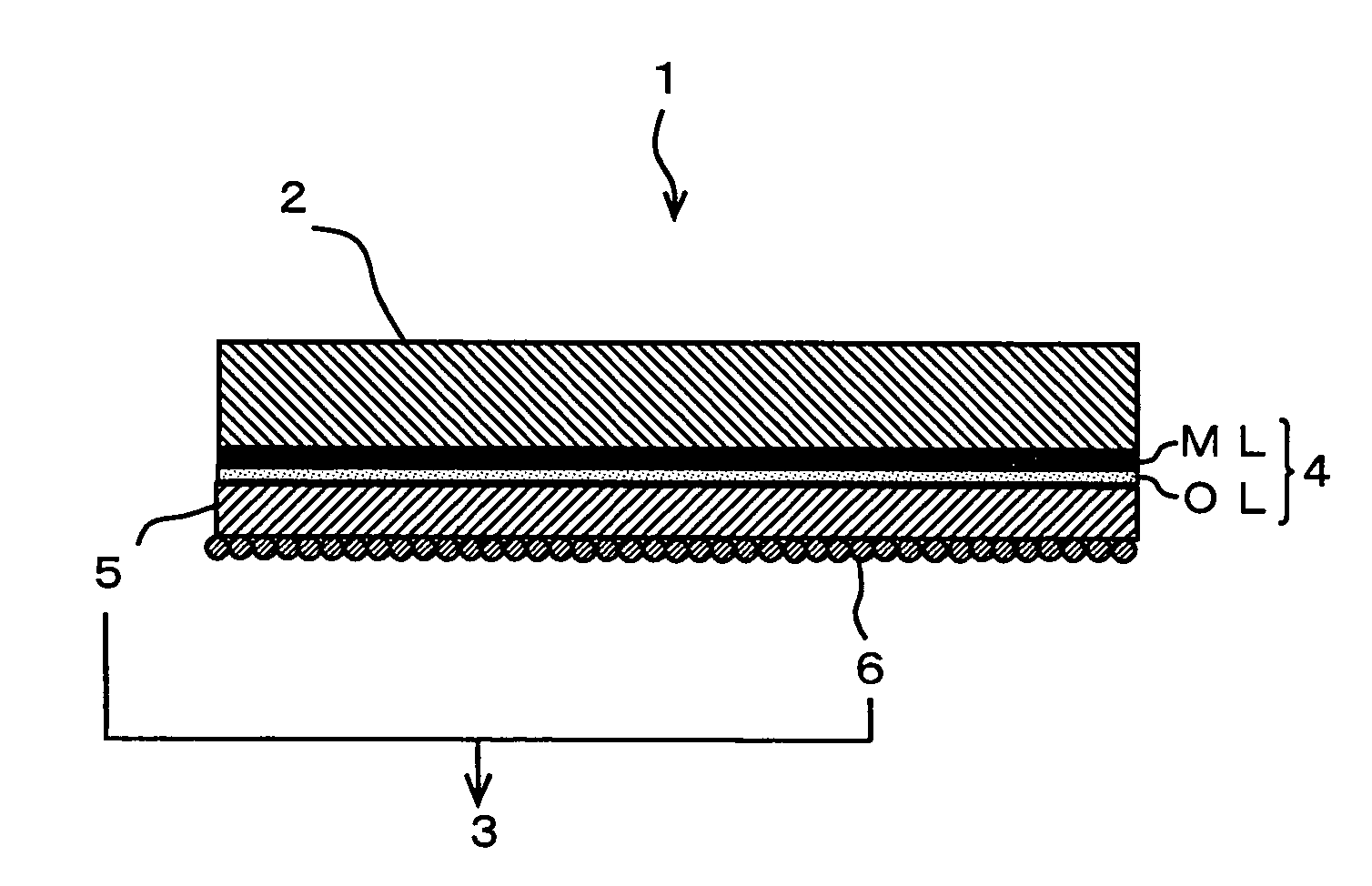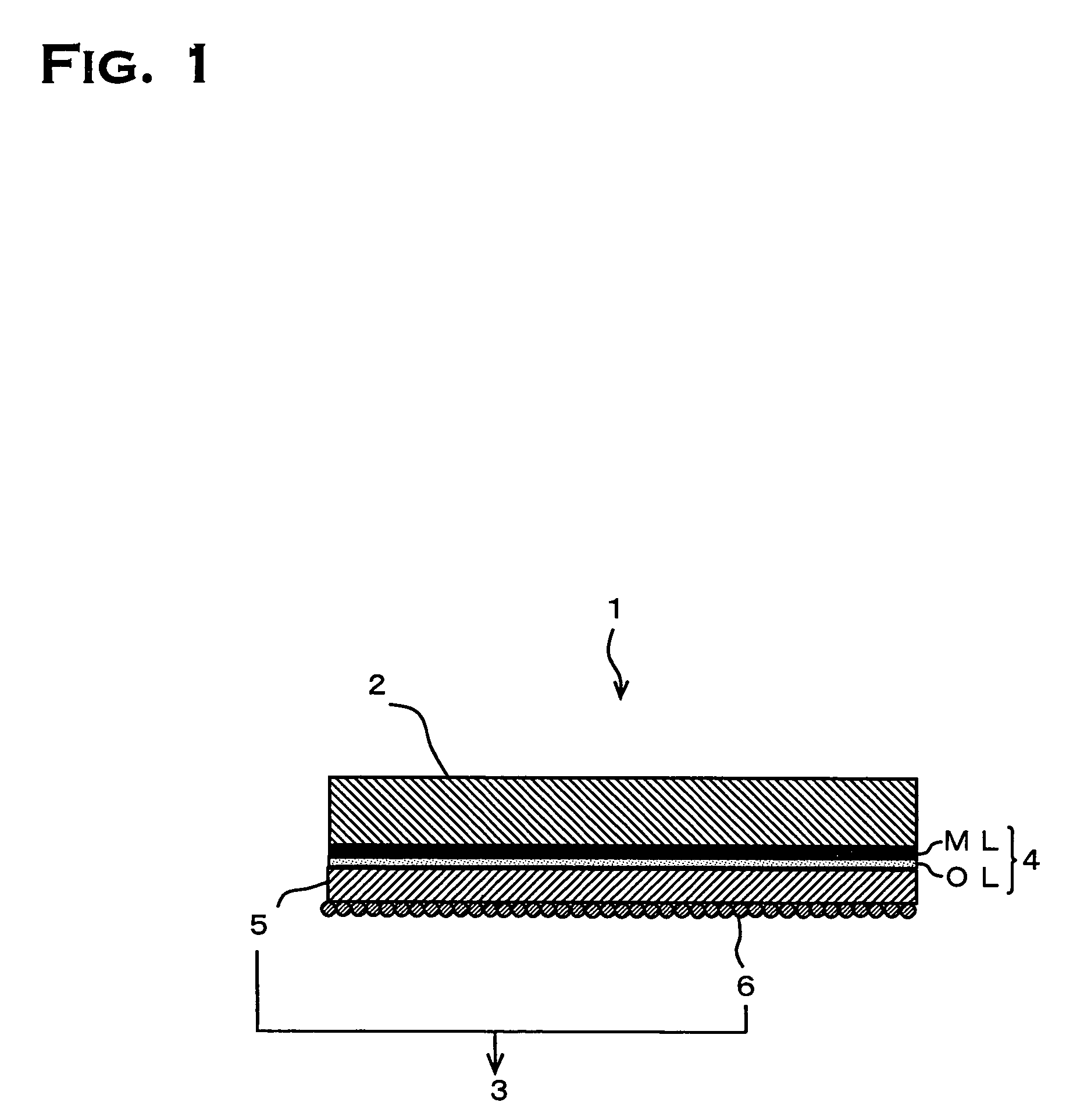Electrolyte copper foil having carrier foil, manufacturing method thereof, and layered plate using the electrolyte copper foil having carrier foil
a technology carrier foil, which is applied in the field of manufacturing method thereof, and layered plate using electrolyte copper foil having carrier foil, can solve the problems of wire breaking, copper foil wrinkle generation becomes a serious problem, and conventional peelable foil, however, is extremely unstable, and achieves the effect of easy peeling
- Summary
- Abstract
- Description
- Claims
- Application Information
AI Technical Summary
Benefits of technology
Problems solved by technology
Method used
Image
Examples
example 1
[0075]As for the present example, the results are described which are involved in the manufacture of the electrodeposited copper foil with carrier foil 1 shown in FIG. 1. Here, an electrodeposited copper foil of 35 μm in thickness, classified as grade 3, was used for the carrier foil 2, and an electrodeposited copper foil layer 3 of 5 μm in thickness was formed on the glossy surface of 0.21 μm in average roughness (Ra). In what follows, following the order of the individual processes, production conditions are described. Incidentally, in the processes described below in which the electrolysis method was used, a stainless plate was used for the anode electrode unless the materials are particularly specified.
[0076]At the beginning, the carrier foil 2 was made to get into the acid washing process. In the acid washing process, the inside of an acid washing vessel was filled with a diluted sulfuric acid solution of 150 g / l in concentration and of 30° C. in solution temperature; the carri...
example 2
[0089]As for the present example, the results are described which are involved in the manufacture of the double-sided electrodeposited copper foil with carrier foil 7 shown in FIG. 3. Here, a low-profile electrodeposited copper foil of 70 μm in thickness, classified as grade 3, was used for the carrier foil 2, and an electrodeposited copper foil layer 3 of 5 μm in thickness was formed on each of the glossy surface of 0.24 μm in average roughness (Ra) and the nodular surface of 0.82 μm in average roughness (Ra). In what follows, instead of describing the production conditions following the order of the individual processes, only the difference from those in Example 1 will be described, because the production conditions applied in the individual processes are fundamentally, exactly the same as those in Example 1.
[0090]The differences form Example 1 are as follows: in Example 1, an anode electrode was arranged on the side, except for the passivation process, but it is necessary to arra...
PUM
| Property | Measurement | Unit |
|---|---|---|
| thick | aaaaa | aaaaa |
| thick | aaaaa | aaaaa |
| thickness | aaaaa | aaaaa |
Abstract
Description
Claims
Application Information
 Login to View More
Login to View More - R&D
- Intellectual Property
- Life Sciences
- Materials
- Tech Scout
- Unparalleled Data Quality
- Higher Quality Content
- 60% Fewer Hallucinations
Browse by: Latest US Patents, China's latest patents, Technical Efficacy Thesaurus, Application Domain, Technology Topic, Popular Technical Reports.
© 2025 PatSnap. All rights reserved.Legal|Privacy policy|Modern Slavery Act Transparency Statement|Sitemap|About US| Contact US: help@patsnap.com



